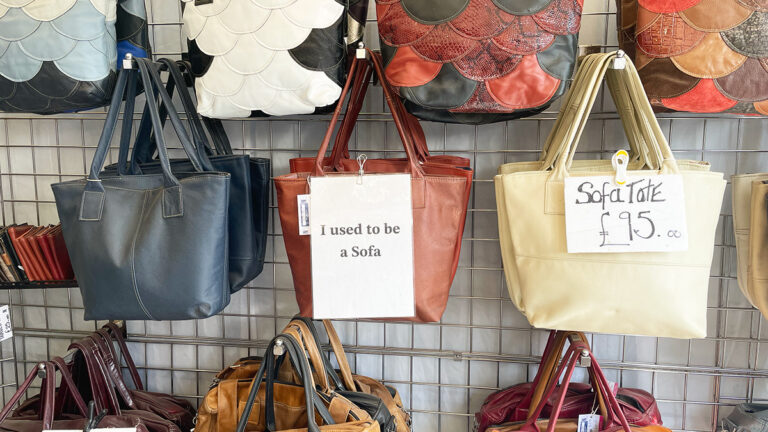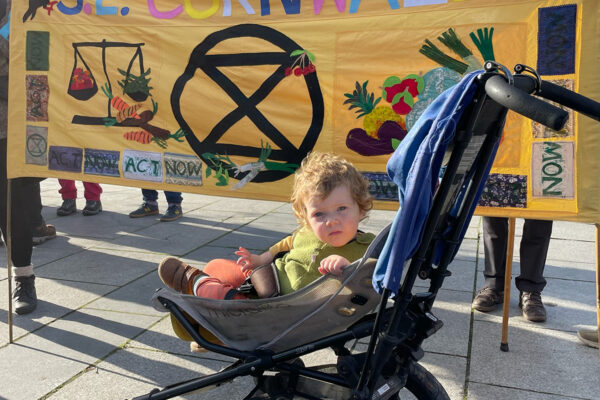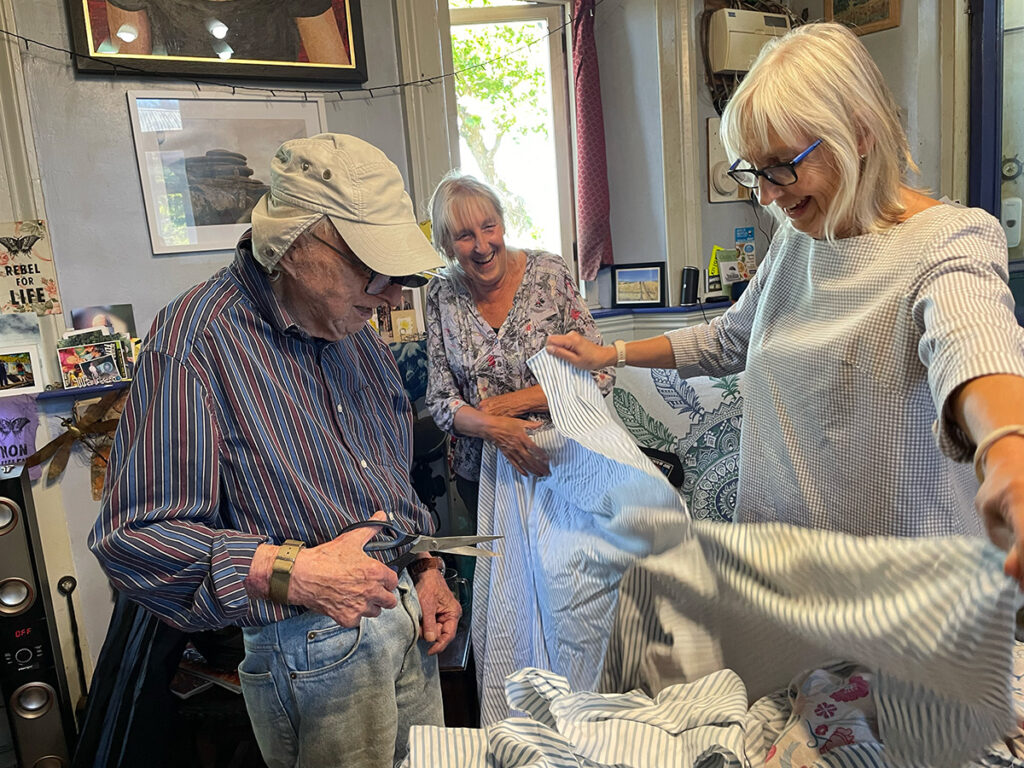
We live on a planet with finite resources, but we often behave as though our resources are infinite. A circular economy is an important cog in the tools we need to keep our planet healthy for generations to come. But what does circular economy actually mean?
The term circular economy relates to resources. Once a product is made, how can we make the components in that product last for as long as possible? A simple mantra is reduce, reuse, repair, repurpose, recycle.
At the top of the tree is reduce. Before buying any new product ask “Is this really necessary?” If you don’t need to own the item, can it be rented or leased, so that it can be used many times over by multiple people.
If you need exclusive ownership, then go for the best quality you can buy; something that is made to last. Once you no longer need the product, then the next step is to pass it on by either selling it or giving it away. With sites such as Ebay, Vinted and Facebook Marketplace, it has never been easier to ensure an unwanted item finds a new home. You could take also it to your local auction house or even better, donate it to a charity shop.
There are companies specialising in particular products, such as phones, secondhand musical instruments, etc. We buy our phones from the iOutlet, which operates nationally but as a happy coincidence for us is based in Plymouth, only twelve miles away.
If a product is broken, can it be repaired? Local repair cafes are an excellent initiative. Our closest is Saltash Repair Cafe on the second Saturday of the month from 10am-1pm at St Nicholas and St Faith church hall and Liskeard Repair Cafe at the Liskerrett Centre on the 3rd Saturday of every month from 1-4pm. There are also repair cafes in Torpoint and Rame. A full list of Cornish repair cafes can be found here.
If repair is not possible, then it is time to repurpose; for example leather sofas into bags or bicycle chains into bracelets.
The final link in the chain is recycle, but this must be at the very bottom, after all other avenues have been explored.
Circular Economy and Railholiday
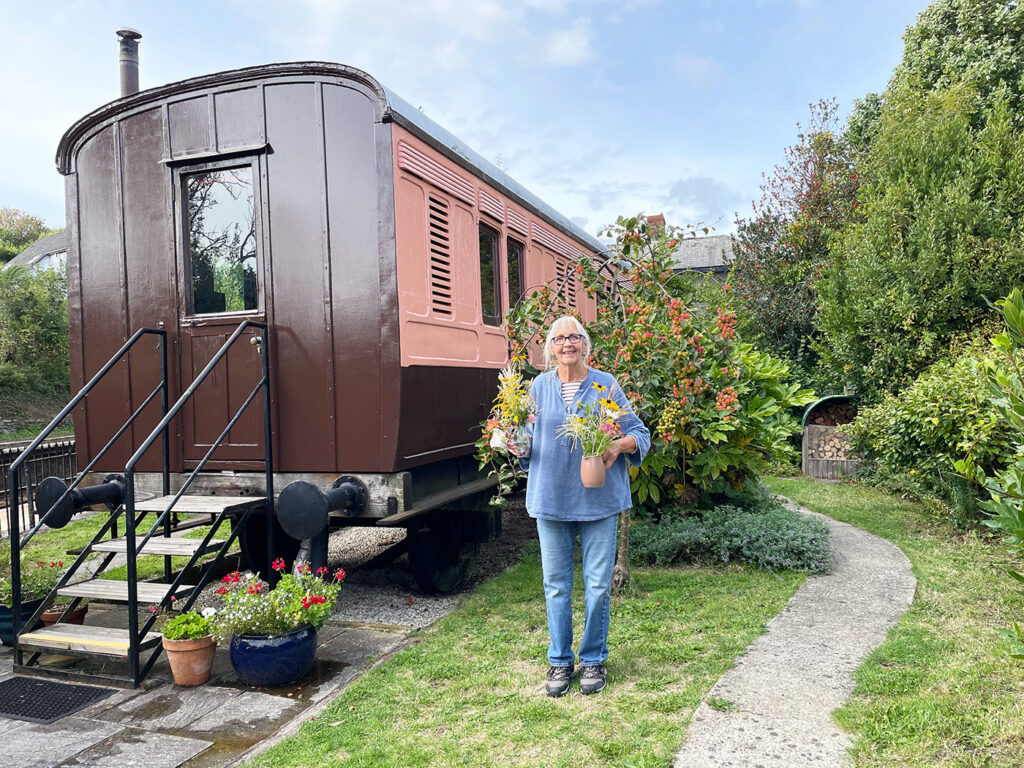
At Railholiday we practice our circular economy by repurposing derelict railway carriages. This journey started years before the business began with the repurposing of the former up-bound station building at St Germans. Unused and unloved for nearly thirty years, we obtained planning permission (after a battle) to turn the building into our home. This was followed by the purchase, restoration and conversion of the Luggage Van in 1996-8 (pictured above).
Our process starts with stripping the carriage to its inner frame, saving all salvageable bits to be repaired and restored. Wood too rotten to be reused is chopped into kindling for use in our stoves. The frame is restored using sweet chestnut timber from our own woodland.
Our carriages sit on rails, requiring them to have wheels and chassis (running gear). We have been lucky in buying three carriages that came with running gear: Harvey in Hayle, the royal coach and the dining coach. The others have all needed theirs constructed in-house. These have come from a variety of sources. Our biggest purchase was in 2010 when we acquired a job lot of wheels, bogies and a truck chassis from Plym Valley Railway, who were scrapping surplus gear and were delighted to see their waste products given a new lease of life.
Metal items (grab rails, door handles, luggage racks, window hinges etc,) are sourced second hand; some from eBay, others from railway preservation groups. We make a point of passing on anything we acquire that is not needed to other people in the preservation world. This has included WW2 stretchers, radiators, surplus doors and windows. By working with other groups we are then able to source things we might not otherwise be able to.
When choosing furnishing, all loose items, such as chairs and tables, are sourced secondhand. We try and find something that would suit the period of the carriage.
We have always been avid charity shop and second-hand buyers. A pair of our carriages were purchased from Ebay for £27, and we’ve managed to avoid buying new clothes for over 30 years now. I had a good grounding in charity shop purchasing; when I was a child in the eighties I would accompany my Grannie as she scoured the charity shops of Leeds to buy dresses to transform into patchwork cushions and bed covers, that she would then sell.
When we can’t buy secondhand, we purchase recycled wherever possible, including every-day items such as toilet paper. However one of the things that we are unable to source secondhand, and do get through, is bedding. Duvets and pillows that are taken out of service are repurposed for a variety of uses. We have insulated our boiler house with old duvets, and used them to line our ponds before putting down pond liner. Carpets and rugs are reused for making green roofs. We reuse sheets, towels and duvet covers in our own home, as well as donating them to friends. Once at the end of their life, they are reused for dust sheets and rags, as illustrated at the top of this article. Quite a team effort – John cutting, Glad ripping and Lil directing.
Blinds and curtains have been repurposed as laundry bags. During Covid I made lots of these, that are still going strong. You can see my video at How to make a bag with Lizzy on Vimeo.
We mend what we can; for example recently Dave fixed a broken shelf on our carriage Harvey of Hayle’s fridge door, which should keep it going for a few years longer. We are lucky to have guests who understand the importance of keeping things going for as long as possible, and who accept that a little yellowing on appliance doors doesn’t affect the functioning of the item. The photo below shows Dave putting a new mount on a painting that got damaged by water, saving the need for a new frame.
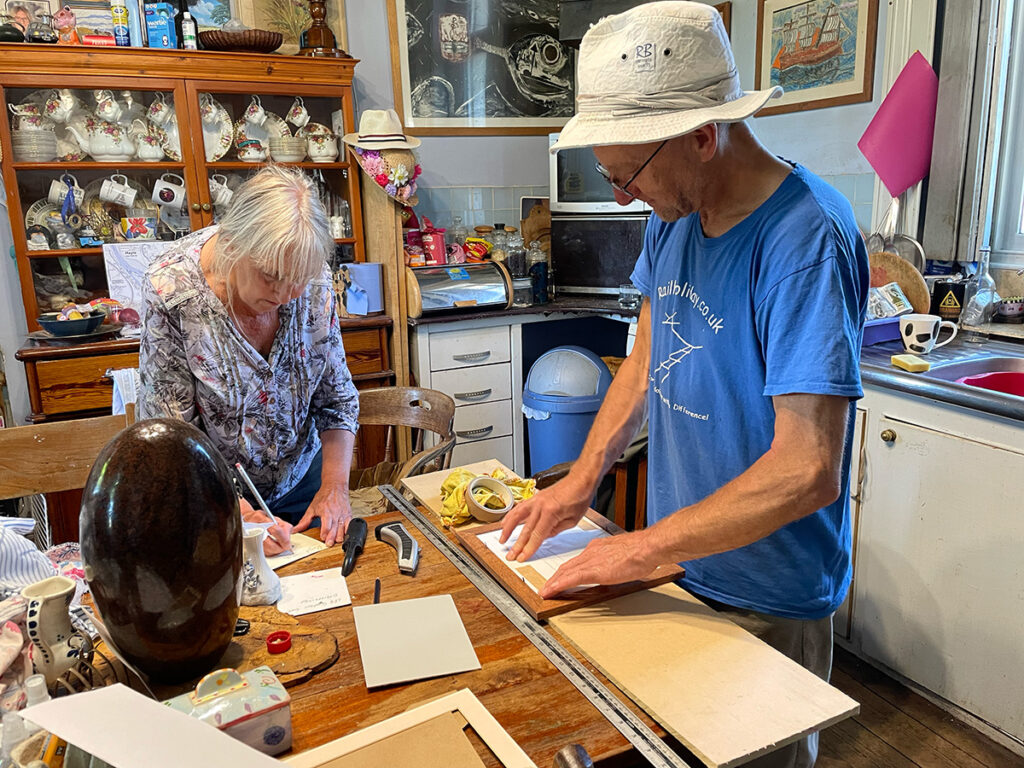
Old microwaves and kettles that are too shabby to use find their way into our own kitchen, and those of friends. We buy the best quality we can, for longevity, and this seems to work well.
We try and buy secondhand washing machines and tumble driers; we have successfully not bought new for many years. We fix machines that are broken, and when they finally can be mended no longer, then they are taken apart, the drums are used as braziers (one of which has pride of place in our carriage Harvey of Hayle’s garden) and the remainder of the materials are recycled.
Can he fix it? Yes he can!
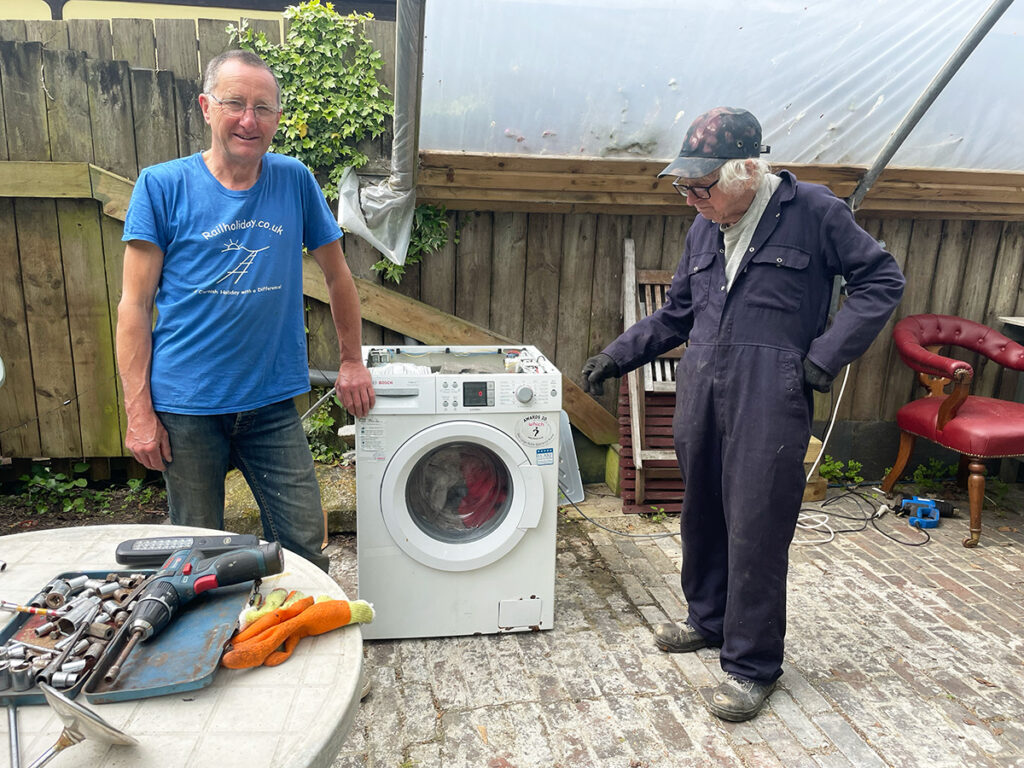
The picture above is a good illustration of Dave and his then 87 year old Dad’s dogged determination not to let built-in obsoletion beat them. Traditionally ball bearings are the first thing to go on a washing machine, and it used to be a simple job to take out the old and put in the new. A new ball bearing costs about £4, so it should be a cheap fix. With the latest designs the drum casing is all one piece and can’t be taken apart, so when a bearing goes, the whole drum needs replacing, for almost the same cost as buying a new machine.
When our secondhand Bosch machine stopped working, John took the outer shell off. Dave then sourced a replacement bearing, cut the plastic drum casing open with a saw, replaced the bearing, and used a soldering iron to weld the plastic back together. John then put all the exterior bits back to where they should be and hey presto! The machine was working again – albeit with a bit of a leak, but only a small one, which, with a bit of fiddling, Dave was able to sort. Twenty hours of labour to fix what used to be a job of less than an hour was frustrating, but there was something satisfying in knowing the machine had a new lease of life, and two years later it is still going strong.
Because the circular economy not only keeps materials in use as long as possible, it is also helps eliminating waste. We also reduce waste by asking guests to leave their surplus food rather than binning it, which is then distributed between ourselves and our staff; a much appreciated perk of the job. Thanks to everyone who has done so – we like to think that nothing here ever goes to waste.
So in a nutshell the circular economy is far more than just recycling. It’s reducing, reusing, repairing and repurposing. It’s creative, constructive, satisfying and innovative. And as a bonus it’s a great way of reducing spending too. What not to like!
This article was recovered from web.archive.org, and originally published July 14th 2025

